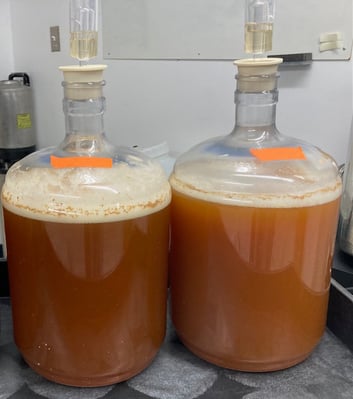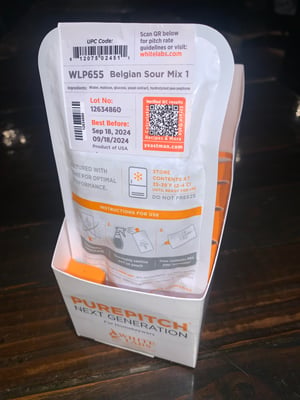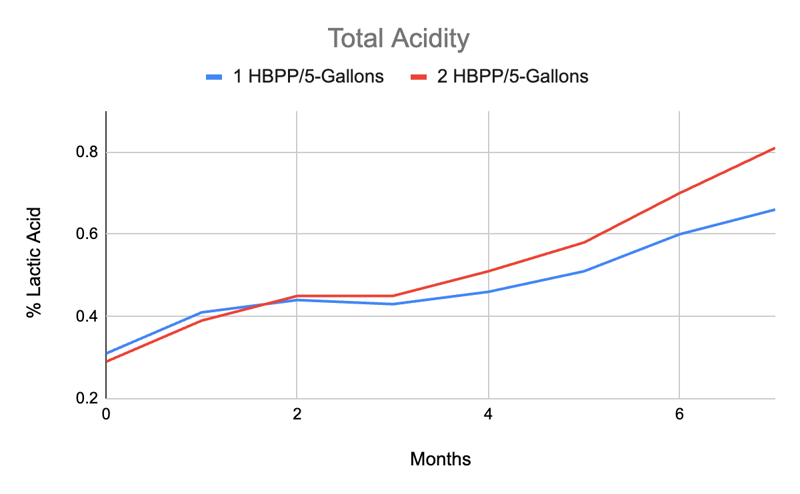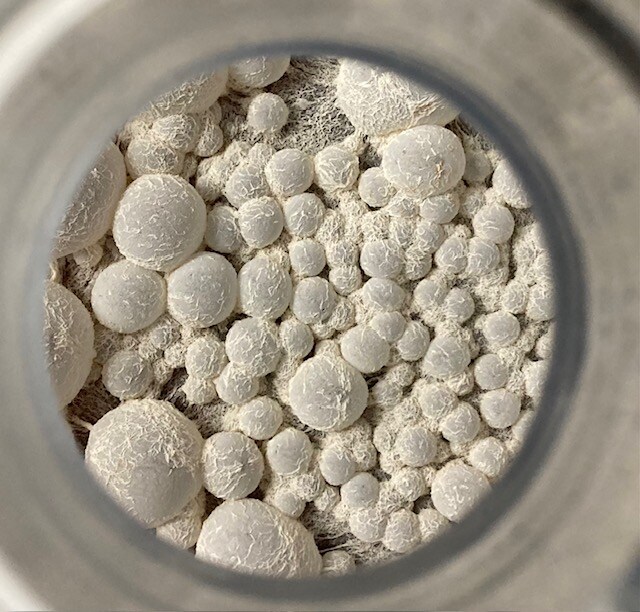WLP655 Belgian Sour Mix 1 is a unique blend of Saccharomyces, Brettanomyces, Lactobacillus, and Pediococcus. Beers produced with Belgian blends, such as WLP655, are often aged in bottles or barrels for several months, continuously evolving their sensory profiles.
The impacts of different fermentation conditions on beer evolution are not fully understood. Our R&D team experimented with different pitch rates of WLP655 and its impact on beer fermentation and sensory evolution during cellaring.
Wort was aseptically collected from White Labs Brewing Co. and pitched with WLP655 at 2 different pitch rates.
- 1 Homebrew PurePitch® Next Generation per 5 gallons
- 2 Homebrew PurePitch® Next Generation per 5 gallons
Starting Plato was at 13 Plato. They were fermented for 9 days at 77°F/25°C. The carboys were then transferred to room temperature and cellared for 7 months. Samples were pulled monthly for analytical and sensory analysis. Acetic acid testing was also performed in months 5-7. Beers finished at 2 Plato.
Main Takeaways:


Figure 1 (Left) WLP655 Homebrew PurePitch® Next Generation. (Right) R&D Fermentations
Sensory:
- In most sensory months, the lower pitch rate was liked more and preferred over the higher pitch rate based on the overall balance of the beer. The higher pitch rate led to more sour intensity.
- Slight sourness was first noted in the higher pitch rate after 3 months of cellaring, and slight sourness was noted in the lower pitch rate after 4 months of cellaring.
- Best sensory between 5 and 6 months at the lower pitch rate (nice sourness and was more complex and had better mouthfeel than the higher pitch rate)
- The higher dosage rate started to have too much acetic acid around 6 months, lower dosage rate had too much acetic acid around 7 months.
Pellicle Formation after 4 months
 Total Acidity Over Time
Total Acidity Over Time

Acetic Acid Over Time
 For this experiment in sensory trials, the higher dosage rate started to have too much acetic acid around 6 months, lower dosage rate had too much acetic acid around 7 months.
For this experiment in sensory trials, the higher dosage rate started to have too much acetic acid around 6 months, lower dosage rate had too much acetic acid around 7 months.





 Total Acidity Over Time
Total Acidity Over Time



